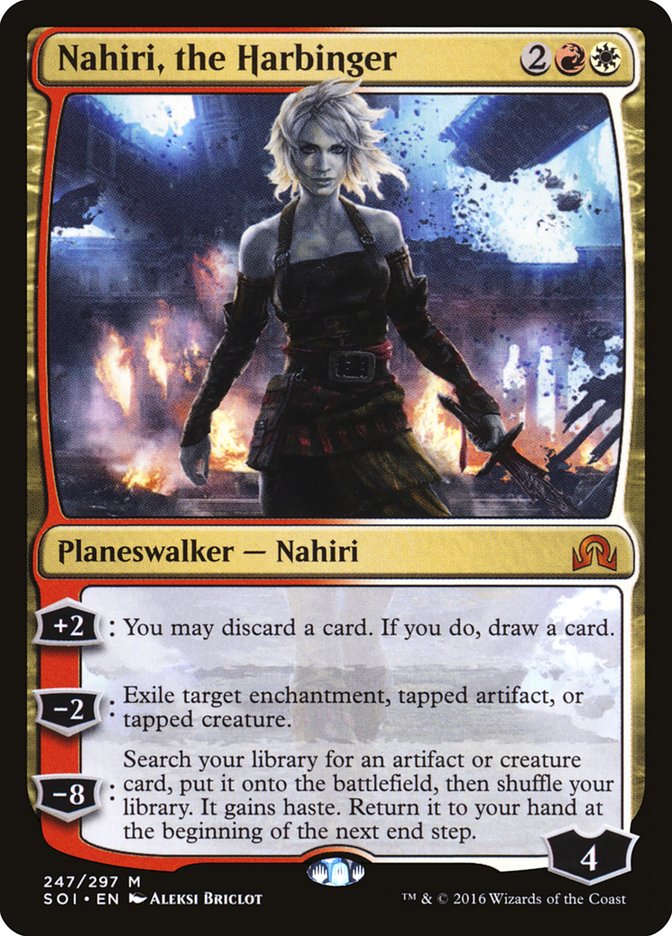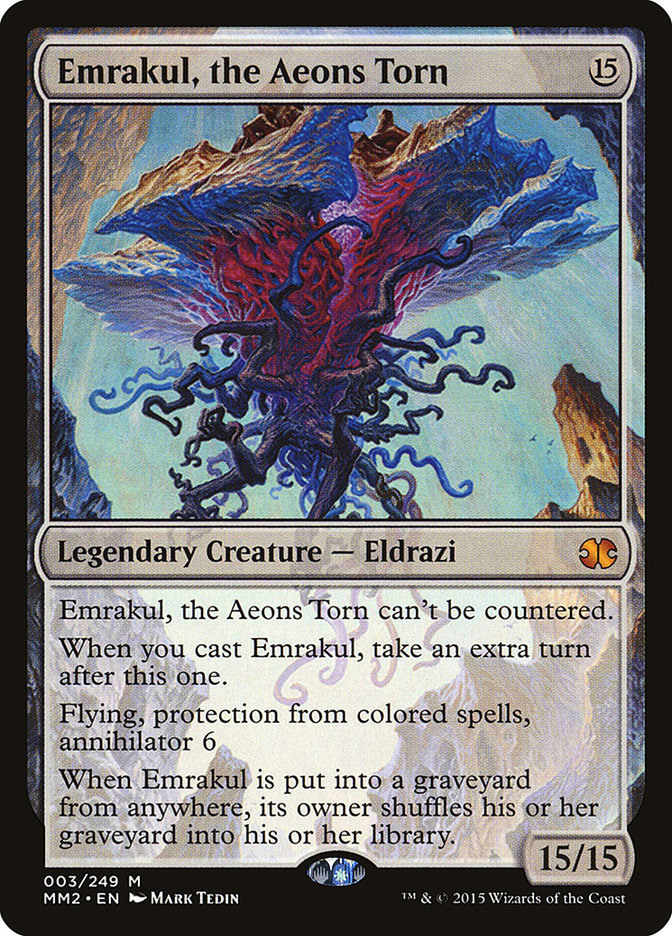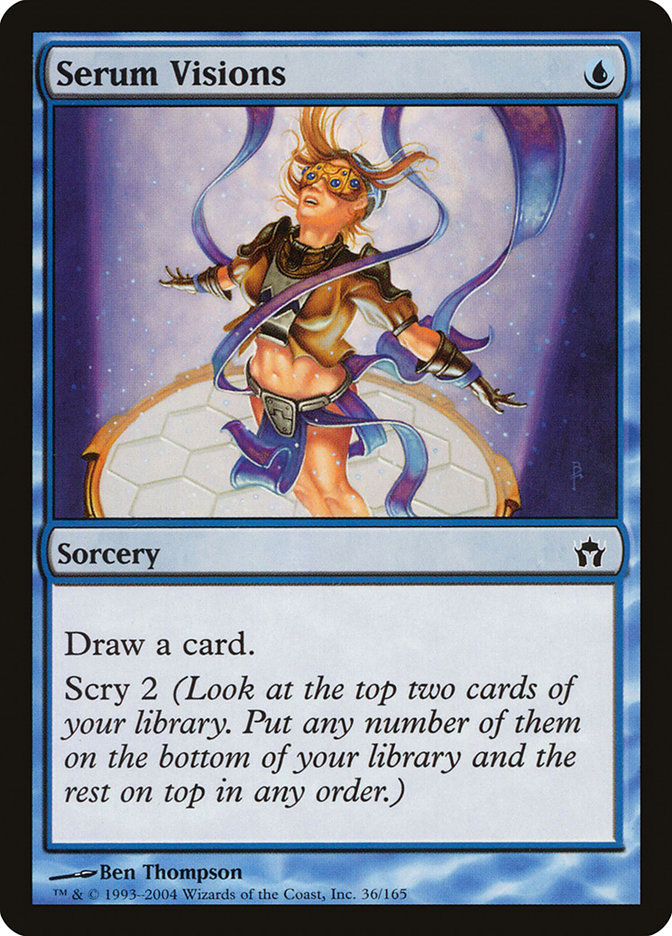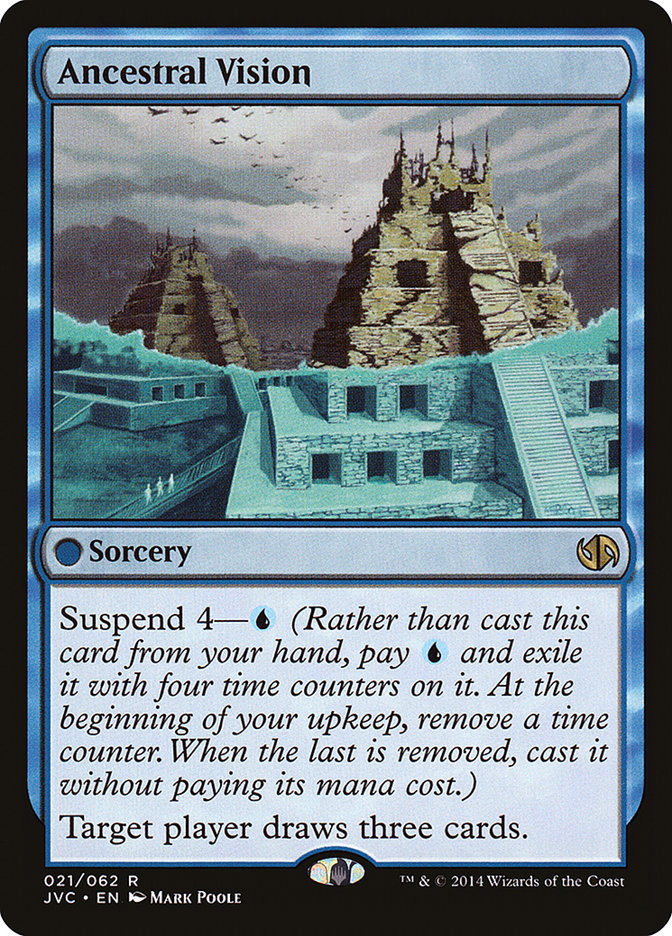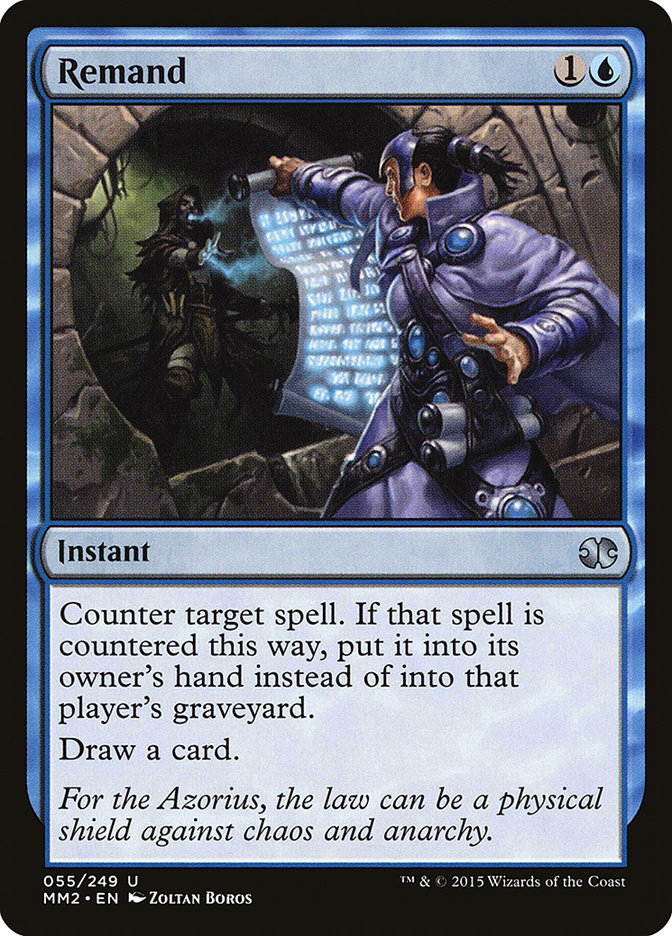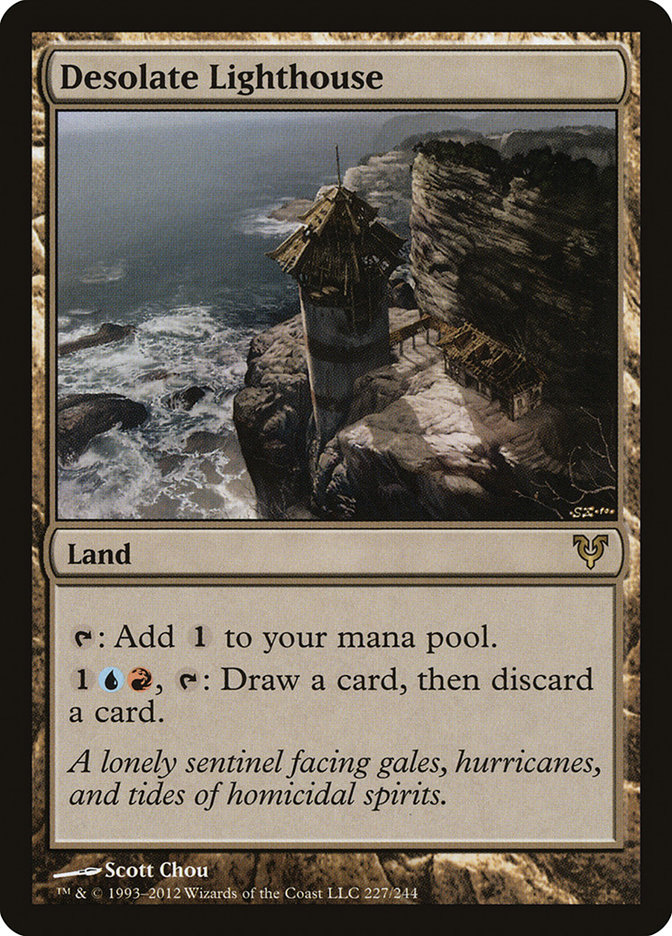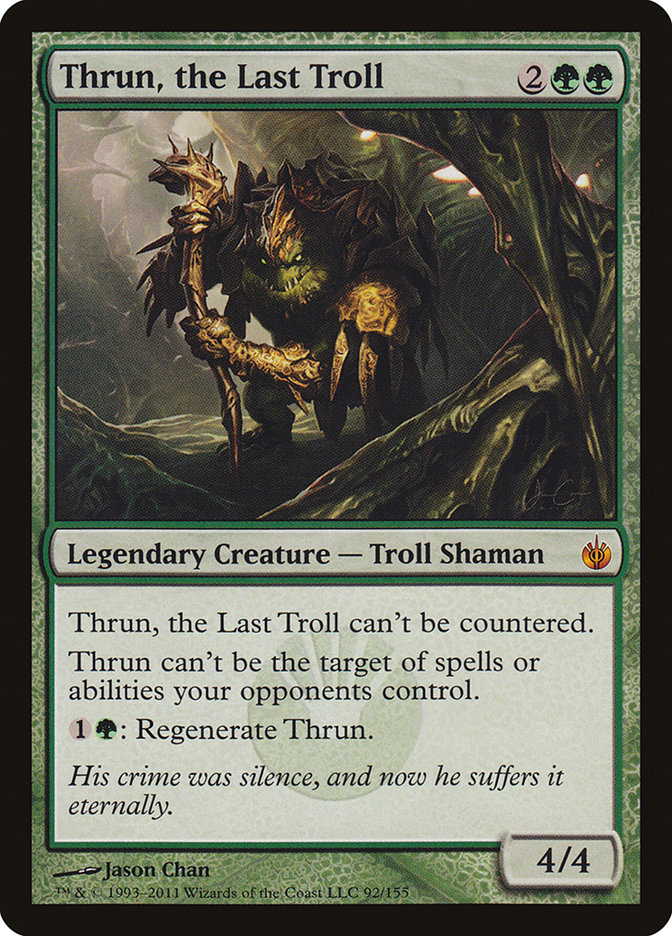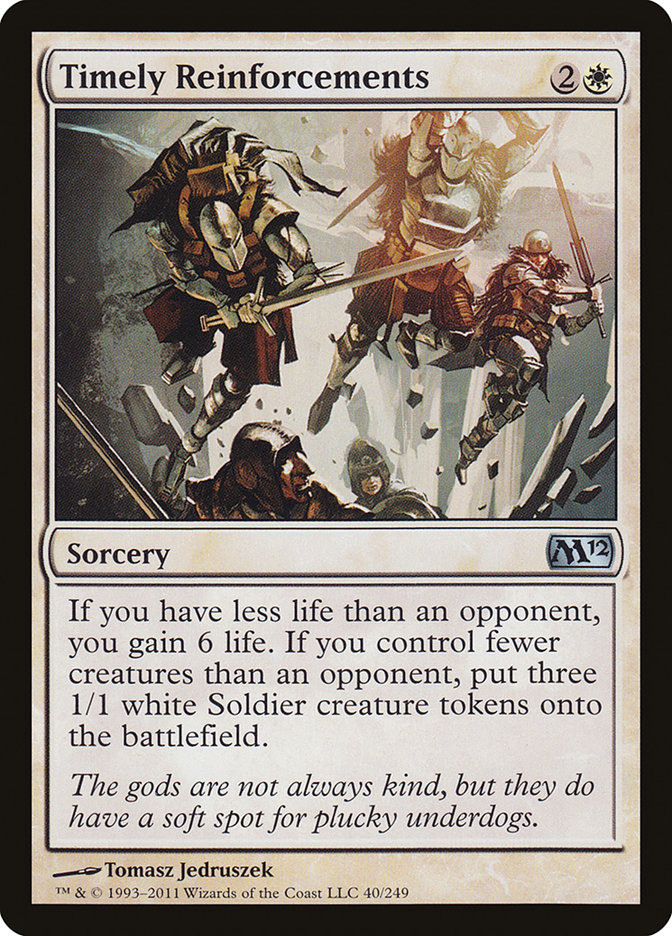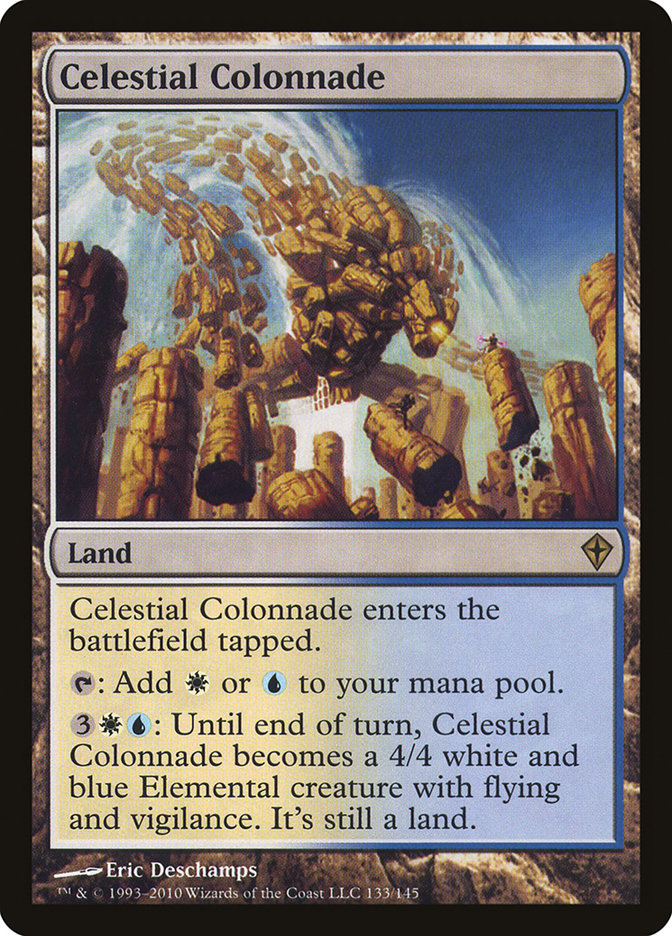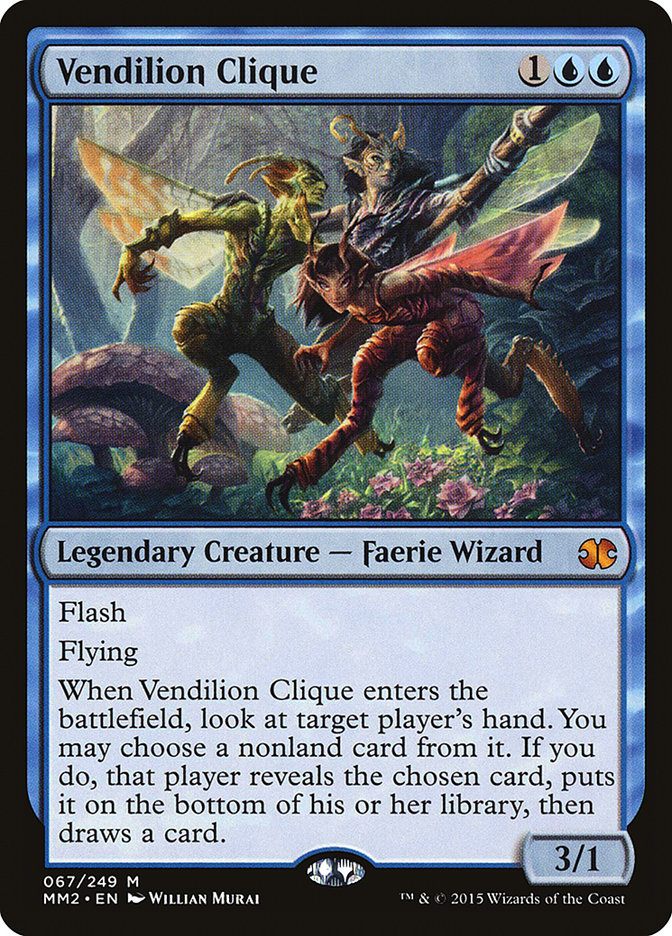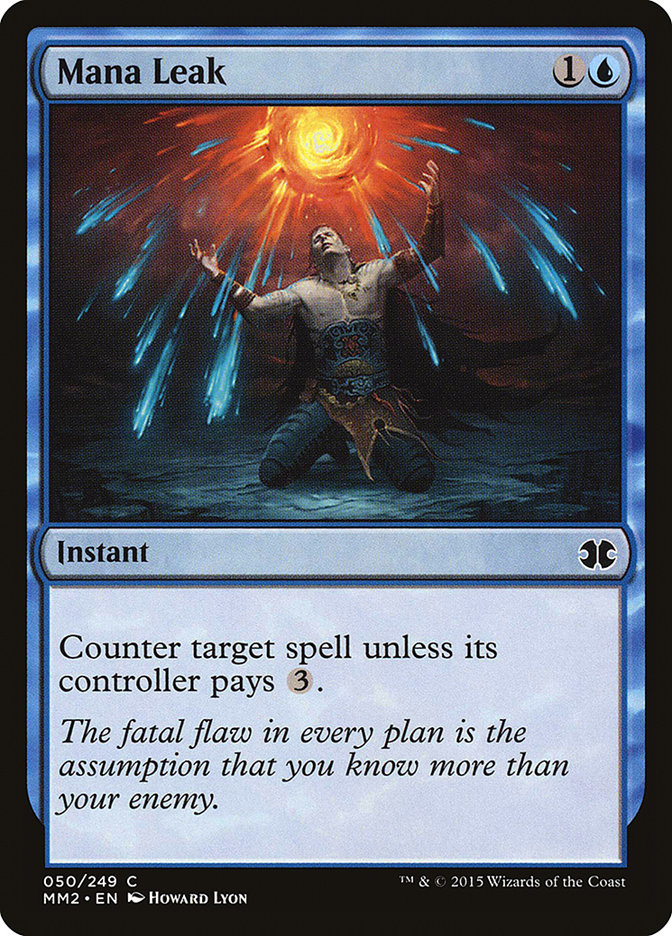So close!
When I lost in the Top 4 of #MTGOChamp last weekend, I wasn’t upset. It was probably the closest I’ve been to Platinum or playing in the World Championships that I’ve ever been. Maybe it’s the closest I’ll ever be, but despite falling short of that, it’s still a finish I am rather proud of.
After starting 1-3, the entire event felt like a freeroll. Plus, Niels played great from what I saw and is a deserving champion. I look forward to seeing how well he does at Worlds.
I stayed with Mike Sigrist for the weekend and he was a huge help testing for my semi-finals matchup, willing to play games and discuss sideboarding strategy. In the end, I think we did well but certainly could have done better. For example, we were way off on our assessment of how Alexander Ivanov would sideboard against me in Standard.
My Standard and Legacy decks were rather boring overall, but my Modern deck was the wild card.
Creatures (5)
Planeswalkers (4)
Lands (23)
Spells (28)

Here’s the gameplan:
1) Resolve Nahiri, the Harbinger.
2) Protect Nahiri for three turns.
3) Destroy all their permanents and possibly their life total.
When preparing for #MTGOChamp, it was clear that Nahiri, the Harbinger would be a potent card in Modern. Not only is it “Suspend 3: Win the game,” but it can also kill things or filter your cards. It’s basically the best, most versatile win condition we’ve seen in a long time. Having a card like that dramatically improves your bad matchups as well, because having a fast clock is sometimes all you need.
The main issue I had with everyone else’s Nahiri decks was that they were building them like control decks. This isn’t a control deck!
Any deck that can kill in three turns once its namesake is on the battlefield should probably operate very similarly to Splinter Twin. (And, as I typed that sentence, I realized that I probably built all of my Psychatog decks terribly back in the day. Alas.)
Why bother trying to control everything when you can just try to protect your planeswalker for three turns?
In order to do that, we need good removal, some options for if and when the battlefield is littered with creatures, some countermagic to interact with combo, and the key to making the deck successful: velocity.
I’m a huge fan of velocity for many reasons.
You typically use your mana every turn. In a game of Modern, I don’t think it’s unfair to say the person who gets the most use out of their mana is the favorite to win the game, regardless of everything else that’s going on. Acceleration and free spells certainly break that mold, but Jeskai doesn’t have any of that. Instead, you hope to get the most out of your mana with the cheap removal against creature decks, counterspells vs expensive spells, and things like Timely Reinforcements and Anger of the Gods.
Nahiri, the Harbinger is also a bargain that will continue providing value for each turn she’s on the battlefield.
With velocity, you see more cards than most players per game. In Game 1, that’s especially important given that some of your interaction may not be exactly what you want in the matchup. A hand full of Timely Reinforcements won’t help you against Inkmoth Nexus, so you need to keep digging.
Since you see so many cards per game, it can be incredibly beneficial to play some spicy singletons in your deck. I used Anger of the Gods and Cryptic Command, but they could be anything from Shadow of Doubt to Vendilion Clique.
You get to run a low land count. I’m a huge fan of this one. The power level of your average cards is not going to be very high, especially once you factor in how often you’re going to draw a dead or semi-dead card. Basically, you can’t afford to flood and you either want to win the game before your dead cards matter or get the most impact out of the cards that you do draw.
That’s the whole premise of the deck, and consequently, the real reason why it works.
Timely Reinforcements isn’t good against everyone, but when it’s good, it’s better than Ancestral Recall would be. When that happens, you can afford to have a semi-dead Remand in your hand that you’ll never have an opportunity to cast. The game will likely be over regardless. Anger of the Gods is very similar. For that reason, having some high-impact, narrow cards in your maindeck is powerful because you’ll see them often enough for them to matter, plus you get to consolidate sideboard slots.
The low land count and relatively low mana curve mean that you should hit most of your land drops, stop hitting them roughly when you want to, and still be able to use your mana effectively.
Desolate Lighthouse seems good in theory but has been too slow for me. I prefer having a Ghost Quarter as my utility land, as being able to protect Nahiri from a creature-land seems to come up more often. There is also the added benefit of having a maindeck hate card for decks like G/R Tron. I would play a second Ghost Quarter before a first Desolate Lighthouse.
The downside to only having one win condition is that things can go poorly if they can consistently deal with or ignore it. For example, maybe they have a Thrun, the Last Troll you can’t deal with. Maybe they are playing Suicide Zoo and either your Nahiri or your life total is always at risk. Maybe you get hit with a Slaughter Games.
Either way, there needs to be a backup win condition. Lightning Bolt plus Snapcaster Mage goes a long way, but those won’t necessarily be in your deck for every matchup.
I used Timely Reinforcements to good effect against Sam Black in the tournament, despite him being a midrange Temur deck. The lifegain offset the damage from my manabase, I cleared his blocker, and the tokens got to work. It won’t work every time, but that situation does come up.
The real reason to use Timely Reinforcements is because it protects both Nahiri and your life total. It’s also one of the best cards you can have against Zoo and Burn, so I’m very excited to be able to maindeck this card in Modern right now.
One of the biggest mistakes I see people make is jamming four Celestial Colonnades in their deck and then justifying their high land count with the presence of an expensive creature-land. Yes, you do have ways to take advantage of your excess mana, but that isn’t more effective than having a velocity-based low-land-count deck.
Also, in what universe do you need the full four Celestial Colonnades? If your deck is incredibly grindy and lacking in win conditions, there might be games where you need to power through their Terminates with multiple Celestial Colonnades. Most of the time, spending six mana only to have your Celestial Colonnade destroyed is going to be devastating.
Creature-lands are definitely something you want, but only in small numbers. Entering the battlefield tapped is a real cost, especially in a format as fast as Modern. If your opponent can deal with Nahiri, the Harbinger and a couple of Celestial Colonnades, your real win condition is Ancestral Vision.
This one isn’t what most would consider to be a traditional win condition, but it counts. One of your options for winning the game is burying your opponent in card advantage. You should be able to keep them pinned down and eventually beat them with some combination of the above win conditions.
I took a bit of a gamble with my sideboard, and given the field, I think it paid off. Some of my metagame calls paid off, such as playing zero copies of Crumble to Dust. Others, like not playing Wrath of God, did not. I thought Anger of the Gods would kill everything, but Loxodon Smiter and Death’s Shadow had other ideas.
In the end, I was pleased with my Modern deck. While I may have made some tweaks had I known the exact field, I wasn’t disappointed with where I ended up. Obviously, preparing for a sixteen thirteen-player tournament is odd, and my decklists from that event aren’t something you should copy for your next Open or Grand Prix, but my Modern deck is very close.
If I were going to re-tool the deck for a wide open metagame, it would look something like this:
Creatures (6)
Planeswalkers (4)
Lands (23)
Spells (27)

And it looks like I wasn’t the only one who wanted to attack with Emrakul, the Aeons Torn last weekend.
Creatures (6)
Planeswalkers (4)
Lands (24)
Spells (26)

Creatures (5)
Planeswalkers (9)
Lands (25)
Spells (21)

The W/R deck is obviously interesting, but I’m sticking with Jeskai for now. Pete’s deck looked great and I’m borrowing several of his ideas for my updated list. Most were things I tried but didn’t like for the #MTGOChamp field specifically. Going forward, they look like good ideas, though.
I didn’t like this card against the myriad of fast decks in the format because I could basically never kill them with the 3/1 body in time. However, if Primeval Titan decks remain a thing, Vendilion Clique is one of the best threats to have against them, or any combo deck in general.
Most of my blue decks in Modern have been of the Grixis variety, so I’m used to having discard in addition to removal and counterspells. Without it, the combo matchups (Scapeshift, Ad Nauseam, Infect, and even Tron) have been much more difficult than I’m used to. Jeskai gets other tools in various places, but Vendilion Clique picks up the slack.
If the format remains as fast as it is, Remand, while exactly what the deck wants, isn’t necessarily the best option. If you’re on the draw, it’s probably a card you won’t get to cast to good effect, if at all. When you’re on the play, Remand is completely fine, but still not outstanding.
Having some number of Mana Leaks (or a Negate) seems like a good idea. They may get sideboarded out all the same, but at least they’ll accomplish something in Game 1.
Right now, the Modern metagame consists of:
Big mana (G/R Tron, Primeval Titan decks)
Midrange green (Abzan Company, Jund)
Fast, small creature decks (Zoo, Burn, Infect, Affinity)
Blue midrange (Jeskai, Grixis)
The creature decks are by far the most prevalent, which is why I want a bunch of one-mana removal and things like Timely Reinforcements. Past that, things are much scarier, especially against big mana decks, but Jeskai Control has a shot against everything.
Realistically, this is the best Modern has ever looked and I’m looking forward to this weekend.
So, am I going to run it back at #GPCharlotte this weekend? It’s likely. I won’t have much time, if any, to do any playtesting. Jeskai Control felt good and it’s only getting better from here. There might be more hate (Maelstrom Pulse, Dreadbore, Pithing Needle, and Grafdigger’s Cage all come to mind), but that just means I need to find something to dodge it. Vendilion Clique could be the answer, but before #MTGOChamp, I also dabbled in Geist of Saint Traft.
Regardless, Jeskai Control is a great deck and I look forward to playing it again.


